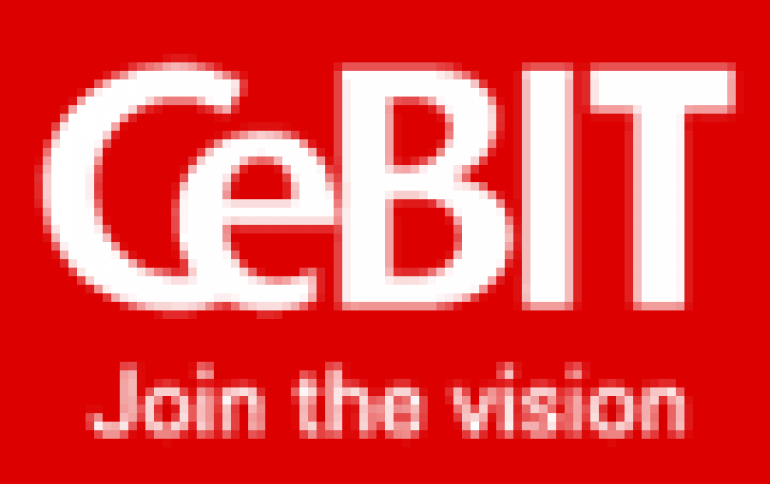
World's Biggest High-tech Fair Opens its Gates
The world's biggest high-tech fair, the CeBIT, kicks off Thursday spotlighting a host of gadgets ready to change the world of work and play.
The CeBIT, running to March 21 in the northern German city of Hanover, is expected to draw more than 6,000 exhibitors from 77 countries eager to take in new advances in digital and information technology.
New advances in phoning on the Internet, mobile warp-speed online connections and next-generation DVD players will jostle for the spotlight.
The products on display will also be a strong indicator of how Microsoft's new operating system, Windows Visa, is faring since its launch at the end of January.
Television services and roaming charges on cellular phones are two other hot topics this year as 18 ministers for telecommunications in the European Union plan to gather Thursday on the sidelines of the giant event.
Asia will be a force to reckon with as 1,600 exhibitors descend on Hanover. But a few other regions have noticeably beefed up their presence including Latin America, while this year's guest country, Russia, is sending 150 firms.
That news will be some solace for the fair's organisers, who have seen companies flee the CeBIT, short for Center for Office and Information Technology, in droves since the Internet bubble burst.
Compared to the record year 2001, attendance has fallen by about half and exhibition space has shrunk by a third.
Even the big names that used to see the March fair as indispensable are shunning the CeBIT. Despite the event's strong focus on mobile phones, Finnish giant Nokia will be staying away along with Philips, BenQ, Motorola, Canon, KPN and many others.
Meanwhile many of the sector heavyweights such as Apple rely almost entirely on their own events.
The CeBIT host Deutsche Messe has reportedly gone into the red this year due in part to the fair's decline. It has declined to confirm the news but has announced a major overhaul for 2008.
The event will be shortened by a day and its profile sharpened to better cater to sector professionals.
Events that are smaller but more focused such as Berlin's Ifa consumer electronics fair and Barcelona's 3GSM mobile telephone event have nibbled away at the CeBIT guest list as the Hanover fair has suffered an identity crisis.
CeBIT aims to be the big umbrella for the world of high-tech, meaning it runs the constant risk of spreading itself too thin.
Sector professionals, the fair's original target audience which still represents 85 percent of visitors, share the cavernous halls at the event with the punters fascinated by the gleaming gadgets and lured by publicity stunts at the bigger stands.
To try to please everyone, the CeBIT organisers introduced a separate consumer electronics exposition last year.
But the scheme was a flop and the show has now been reintegrated into the fair, meaning that the biggest new flat screen television sets and Sony's PlayStation 3, due in European stores on March 23, will also be available for previews.
The strategy needs to pay off quickly because the CeBIT can no longer justify its decline with gloom in the sector.
New advances in phoning on the Internet, mobile warp-speed online connections and next-generation DVD players will jostle for the spotlight.
The products on display will also be a strong indicator of how Microsoft's new operating system, Windows Visa, is faring since its launch at the end of January.
Television services and roaming charges on cellular phones are two other hot topics this year as 18 ministers for telecommunications in the European Union plan to gather Thursday on the sidelines of the giant event.
Asia will be a force to reckon with as 1,600 exhibitors descend on Hanover. But a few other regions have noticeably beefed up their presence including Latin America, while this year's guest country, Russia, is sending 150 firms.
That news will be some solace for the fair's organisers, who have seen companies flee the CeBIT, short for Center for Office and Information Technology, in droves since the Internet bubble burst.
Compared to the record year 2001, attendance has fallen by about half and exhibition space has shrunk by a third.
Even the big names that used to see the March fair as indispensable are shunning the CeBIT. Despite the event's strong focus on mobile phones, Finnish giant Nokia will be staying away along with Philips, BenQ, Motorola, Canon, KPN and many others.
Meanwhile many of the sector heavyweights such as Apple rely almost entirely on their own events.
The CeBIT host Deutsche Messe has reportedly gone into the red this year due in part to the fair's decline. It has declined to confirm the news but has announced a major overhaul for 2008.
The event will be shortened by a day and its profile sharpened to better cater to sector professionals.
Events that are smaller but more focused such as Berlin's Ifa consumer electronics fair and Barcelona's 3GSM mobile telephone event have nibbled away at the CeBIT guest list as the Hanover fair has suffered an identity crisis.
CeBIT aims to be the big umbrella for the world of high-tech, meaning it runs the constant risk of spreading itself too thin.
Sector professionals, the fair's original target audience which still represents 85 percent of visitors, share the cavernous halls at the event with the punters fascinated by the gleaming gadgets and lured by publicity stunts at the bigger stands.
To try to please everyone, the CeBIT organisers introduced a separate consumer electronics exposition last year.
But the scheme was a flop and the show has now been reintegrated into the fair, meaning that the biggest new flat screen television sets and Sony's PlayStation 3, due in European stores on March 23, will also be available for previews.
The strategy needs to pay off quickly because the CeBIT can no longer justify its decline with gloom in the sector.




















